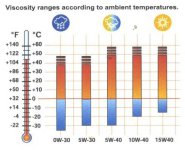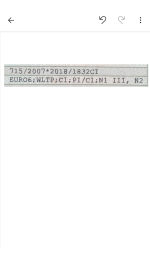There is quite a bit of confusion about what is the correct engine oil for Fiat Ducato with Euro 6 engine. Apparently, there is a standard to which the oil must conform: "fiat 9.55535-DS1". Note the end, there is also a specification "*-S1" and "*-GS1" and Fiat's manual may contain an error.
So it should be "fiat 9.55535-DS1".
Those who buy the "recommended" oil (Selenia) will have to shell out a hefty sum. Besides, there are quite a few brands where, in my opinion, you pay for the name. With a decent range of manufacturers, the choice is also quite large.
The question is: Am I overlooking something? Or is any oil with specification "fiat 9.55535-DS1" more or less equivalent?
As an example, I have "Castrol Magnatec 0W-30 GS1/DS1" in mind as a permanent solution - this oil has specification "fiat 9.55535-DS1" and seems a safe choice. However, Castrol Edge 0W-30 does not have that specification but may be a better quality oil (ACEA C3).
So it should be "fiat 9.55535-DS1".
Those who buy the "recommended" oil (Selenia) will have to shell out a hefty sum. Besides, there are quite a few brands where, in my opinion, you pay for the name. With a decent range of manufacturers, the choice is also quite large.
The question is: Am I overlooking something? Or is any oil with specification "fiat 9.55535-DS1" more or less equivalent?
As an example, I have "Castrol Magnatec 0W-30 GS1/DS1" in mind as a permanent solution - this oil has specification "fiat 9.55535-DS1" and seems a safe choice. However, Castrol Edge 0W-30 does not have that specification but may be a better quality oil (ACEA C3).
Last edited:



